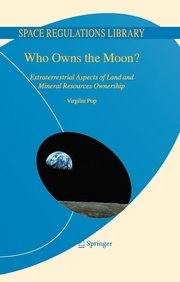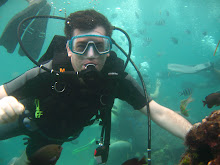It was, maybe, the most beautiful marble block. More splendid than the one that, reaching Mylos, was to become the most famous Venus. The Sun, enlightening it, was pouring upon it a special glamour. And it was waiting for the chisel as the Phoenix awaits for the fire; without fire, the Phoenix could not rise again, and without chisel marble could not live. It is maybe too much to say “live” for a statue; no matter how alive it would seem, the smile on a statue’s lips remains cold.
Pygmalion was waiting for it like only a sculptor could wait. Every morning he was descending in the harbour to see whether in the sunrise one could see the contour of a ship carrying the desired gift to the shore. Today, the kiss of the sun with the sea made true Pygmalion’s dream: in the horizon, travelling on a ship and clothed in stone, his Galateea was arriving.
Galateea moved within the marble block when Pygmalion caressed the stone for the first time. The sensation lived by the sculptor in that moment was that of a mother caressing her unborn child. And the calm to wait every morning the rise of a ship from the sea turned into the haste of the porters carrying the marble block to the workshop.
At his age of twenty-five, Pygmalion could afford, eventually, to have his own marble block, paid with the labour of endless years. Galateea was to be only his; she was to bless his garden with the whiteness of her marble skin.
Galateea was his dream; he created her from the memory of hundreds of virgin bodies that served as models for marble veneras and artemyses. And only the white purity of the marble, the solid support, was missing for her to materialise. At the beginning, Pygmalion’s dream was to leave the marble block virgin, unsculptured. By leaving it untouched, his imagination could create Galateeas in different hypostases, as he could create dreams from the darkness of the night. But an unsculptured stone could hide anything: unicorns, centaurs, veneras, artemises and zeuses sitting on their thrones with flashes in their hands. By giving her a definite shape, Galateea could then be only the girl from his dreams and not the infinity of faces that hide in an unsculptured stone.
To him, unveiling a statue from the surrounding stone was not difficult. His apprentices were filling with wonder when Pygmalion was sculpturing. It seemed that the stone cut by the chisel was clay sticking on the statue, and the sculptor was doing nothing but to clean the statue of surplus. And Pygmalion had the gift to fill his apprentices with talent; especially Myron, the most able apprentice, was drinking so often from the cup of his master’s teaching.
Finally, then, Pygmalion’s hands, the chisel and the hammer could free Galateea from the breathtaking prison of the stone. Brought in the workshop, the marble block was waiting to give birth to the sculptor’s dream.
For the first time, Pygmalion’s workshop was not filled with apprentices and models. He needed no girl to serve as model; the template was well defined in his mind. And he chased his apprentices as the groom chases his guests on the wedding night. To look how a goddess is born is not a sacrilege; one can find goddesses in every temple. To look how the groom takes away the cloth from his bride - be it a marble one - is a thing eye cannot afford to do.
Endless hours, before taking the hammer and the chisel, Pygmalion’s arms caressed the marble, as in a painfully sweet foreplay, in a controlled awaiting. That was the way he was caressing the darkness that was fathering every night his living Galateea.
He was as afraid to give the chisel the first strike as the groom is afraid to wound his bride in the torment of the first night. Dawn has caught Pygmalion and Galateea looking in eachother’s eyes. The candle was smoking, sign that Pygmalion worked the whole night at its light. Of Galateea, her face was contoured while her body was still the prisoner of the rock.
The following days were the most pleasant exhaust to Pygmalion and the deepest wonder to his apprentices. Only Myron could see his master when being called in the garden to buy some food from the market. In the workshop, Myron could not enter; the secret surrounding Pygmalion’s work was greater than the one around Hephaistos’s workshops. And Pygmalion was calling his apprentice very seldom; the spiritual food - the right to free Galateea from her stone prison - was almost sufficient for his life.
Galateea was buried in stone down her breast when Pygmalion knew for the first time that she will be alive. The caresses of a cold, immobile statue, were not enough to him. Galateea had to be alive, to be his in the real sense of the word. He knew that the Gods were with him; he knew that he has sculptured with passion the whole pantheon of the city temples, and Gods were owing him. And, more than all, Aphrodite. His belief in the Goddess of the beauty could not be measured in words, but in stone. He has sculptured Aphrodite, and she had now to help him by giving life to Galateea. And the belief that the Gods will help him was so strong, that he was fearful to pray before Galateea was fully sculptured; he was afraid that she might remain, alive, half buried in the cold white of the marble.
From that moment on, the work was more fruitful. He was waiting for the day he could step in Aphrodite’s temple to ask for the seamless gift. And that day came when Galateea smiled to him - with a smile still cold - fully undressed from the rocky cloth, delivered from her millennia-long time spent in the marble prison.
Hermes seemed to have put wings to Pygmalion’s feet when he went to Aphrodite’s temple. She was waiting for him, cold, but seeming heated by the lips of the lovers asking for her help in the warm summer nights. “We know eachother, Goddess” - whispered the sculptor. “You have shown yourself to me one night ordering me to sculpture your body and face and, behold, I have fulfilled your order. I know well that Gods order mortals, and mortals pray Gods. I have prayed you to bring Galateea every night by me; you have listened to me as a human listens to the Gods; what I ask you now is more difficult, but not impossible”. Pygmalion’s lips stopped their torment for a moment, seeking for words. “I love Galateea; make, please, so that the stone that she is made come to life. You would fulfil my dearest dream”.
The empty eyes of the Goddess seemed, for a moment, filled with care for Pygmalion; he understood from the divine brightness of the marble sculptured by himself that the Goddess has fulfilled his wish.
The travel home seemed eternal to him. He was hurrying to see Galateea alive, to feel the trembling of her eyelashes and to be his - only his-. At Marathon, the soldier ran slower than Pygmalion ran to meet Galateea.
Stepping in the workshop, where he left Galateea that morning, Pygmalion closed his eyes, in order to let himself blinded afterwards by the brightness -this time human- of her skin. When opened, Pygmalion’s eyes became a mirror where a living Galateea could be seen tasting from the heat of Myron’s lips.
Virgiliu Pop
Timisoara, 1991
John Varley
1 day ago






0 comments:
Post a Comment